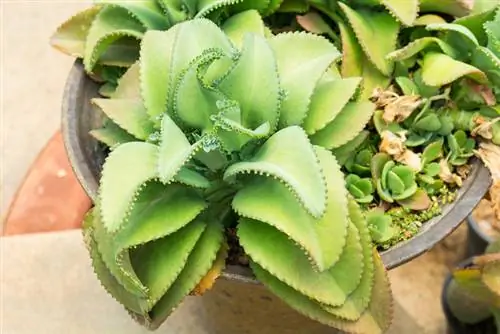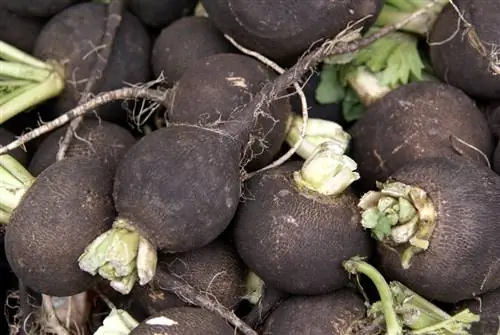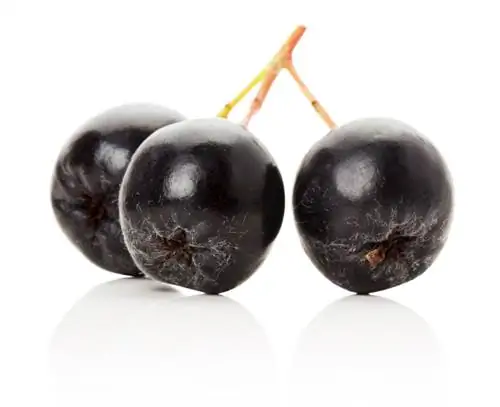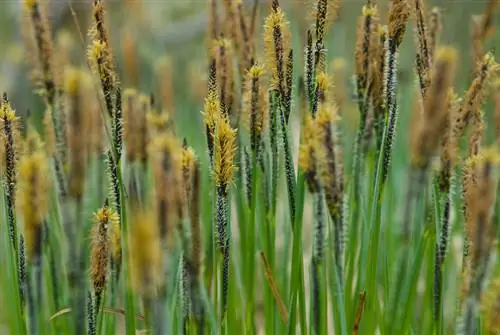- Author admin [email protected].
- Public 2023-12-16 16:46.
- Last modified 2025-01-23 11:19.
The brood leaf was introduced to Europe around the year 1800, initially to the botanical gardens. Since it is quite easy to care for, this genus from the Crassulaceae family has also conquered a place in home living rooms.

How many species of brood leaf are there?
About 30 species of brood leaf are known. Some make good houseplants, others grow so large that they are more suitable for botanical gardens. These include, for example, the Kalanchoe tomentosea with its oval, fleshy and silvery hairy leaves. The Kalanchoe beharensis with pointed triangular leaves can also grow meters high. The Kalanchoe crenate only shows a few brood buds. Its leaves are roundish.
Which types of brood leaf are suitable as houseplants?
As a rule, there are two types of brood leaves in the living room or office, namely the species “Kalanchoe tubiflora” and “Kalanchoe daigremonatium”. They are robust and easy to care for, like all brood leaves. The Kalanchoe laetivirens or Bryophyllum laetivirens is also ideal as a houseplant. The two names Kalanchoe and Bryophyllum are used for the brood leaf, they are the same plant.
Do different species require different care?
Optically, the different types of brood leaves differ significantly from each other, but not in terms of care. Most species grow with an upright stem, although some climb or climb. These succulents are rarely shrubs or sub-shrubs. They need a lot of light for strong growth and cannot tolerate waterlogging.
Propagate the brood leaf
In principle, you don't have to worry about the propagation of your brood leaf, it works all by itself. The brood leaf develops small daughter plants on the edges or tips of the leaves. These plants fall off when they are sufficiently rooted. If they land on soil or substrate, they grow, but on the windowsill they dry out.
The most important things in brief:
- approx. 30 different species with different appearance
- as a houseplant mainly 2 species: Kalanchoe tubiflora and Kalanchoe daigremonatium
- Propagation “easy as pie”
- very easy to care for
Tip
All brood leaves have similar requirements in terms of location and care. If you have different types, this does not require any special care.






